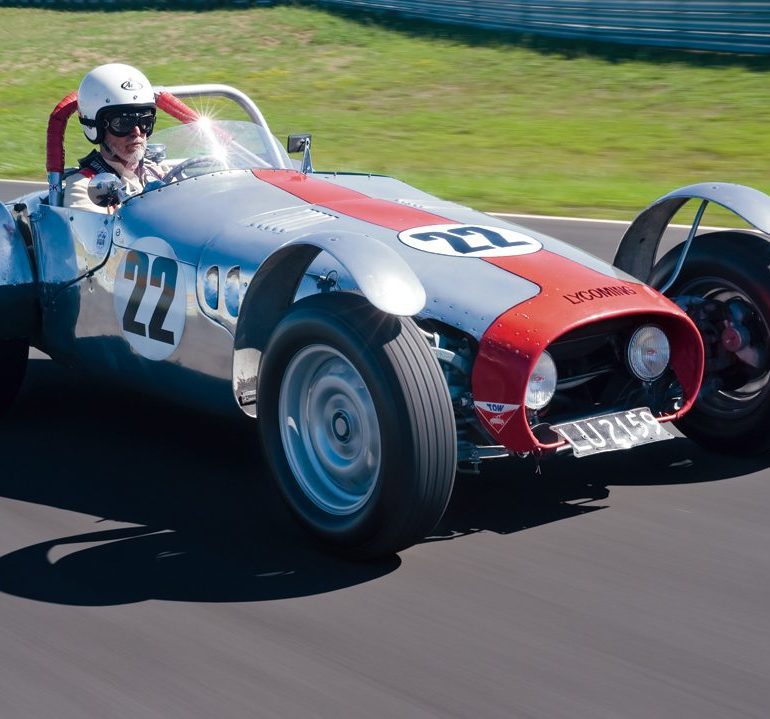1956 Lycoming Special
The immediate post World War Two years were best described as austere times for many countries, even those that were on the allied side. The post-WW2 period for New Zealand was particularly difficult, especially when it came to imports, as successive New Zealand governments sought to take direct control of what came into the country.
Such control over imports applied, of course, to motor vehicles, to such an extent that it was extremely difficult to buy an imported motor vehicle unless the buyer had overseas funds. Such flummery as competition cars were simply out of the question.
However, New Zealand was and remains very much an automotive-centric society and, to a great extent, a sports-loving society. So, when those two attributes were mixed, motor sport was and still is a very popular sport. Such economic restrictions didn’t stop motor racing events occurring the length and breadth of both the North and South Islands. Restrictions meant that many an enthusiast had to improvise, and it’s fair to say that given reasonable incentive the average Kiwi bloke could get going any mechanical device as long as he had enough fencing wire at his disposal!
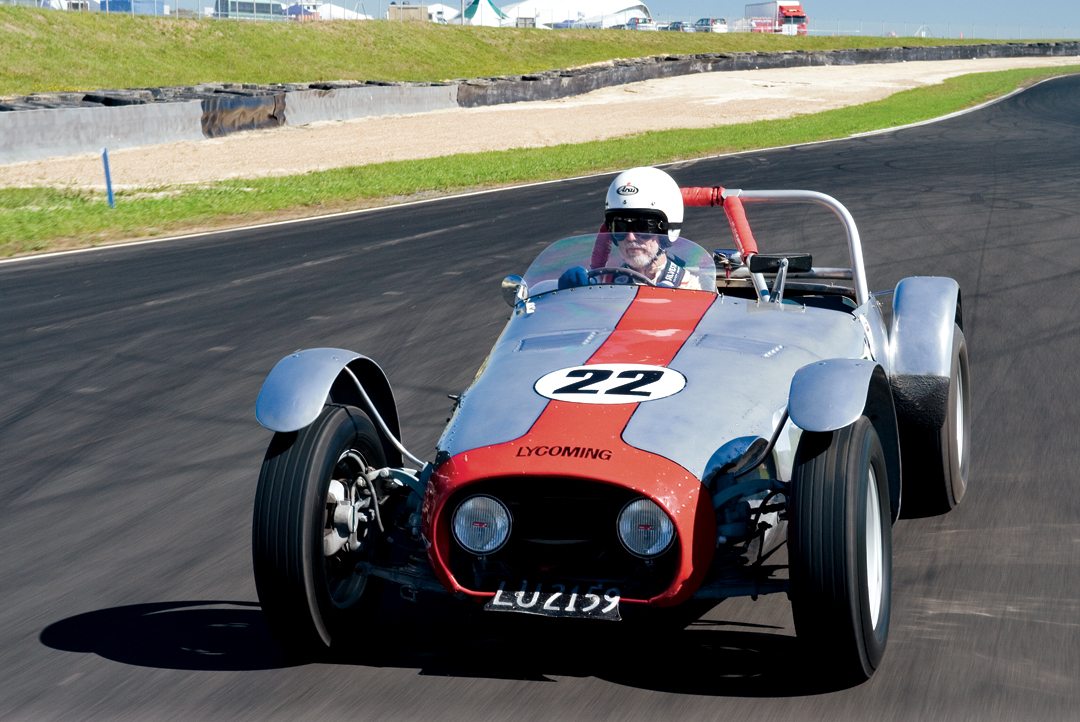
Photo: Tony Brownjohn
Ralph Watson
Born and raised on the South Island of New Zealand, Ralph Watson showed early signs of an interest in engineering when as hobby projects he built a number of small-capacity steam and petrol engines. Then, as with many a cash-strapped youngster, he had a succession of AJS, Ariel and Rudge motorcycles. Then followed the ubiquitous Austin 7 and Morris Minor.
Following WW2, Watson became involved in motorsport, mostly in Singer vehicles. It was for one particular vehicle, a 1934 Singer Le Mans with modified engine and body, that he started to be noticed for his level of expertise in both preparation and driving ability.
Watson then set about building his own car, based on a twin-cylinder engine from a 1930/36 BSA three-wheeler, but fitted to a much modified 1931 BSA four-wheel chassis. On the circuit and the road this little car proved to be highly successful, and again he was noticed. One person who did take notice of him was wealthy New Zealander Ron Roycroft who was running a Bugatti T35, but had insufficient time to prepare it properly. In passing, Watson offered to get it right for an oncoming meeting at the aerodrome circuit at Ohakea, and soon a collection of Bugatti parts arrived in his workshop.
It was completed in time, but a year later was back again with engine problems. Patriarch Arthur (know as A. J.) Roycroft had ordered a new Jaguar XK120 engine for the Bugatti. It took two years to arrive from the UK, but was eventually fitted. (It remains fitted to this car today). A.J. Roycroft then purchased a P3 Alfa, but it was very sad in the mechanical department. Ralph Watson was given the task of rebuilding the car, and was asked to join the Roycrofts as a full-time racing mechanic.
Aviation Engines
While other Roycroft cars followed, Watson did have the time to consider a new car for himself. During the early war years he had acquired copies of publications that contained specifications of civil aircraft engines. In later years, Watson would spend time browsing through these publications looking at such aspects as weight, power and dimensions, and wondering what would be best for fitting to a car.
Watson came to the conclusion that flat-four configuration engines would be best, as whatever vertical engines were available would just be too big. The Lycoming 0-290 engine took Watson’s fancy even though it was underpowered, with 125 bhp at just 2,500rpm. However, it was probably just wishful thinking on Watson’s part as the chance of suitable engines being available in New Zealand at the time was highly suspect.
However, there was some serious thought of fitting such an engine to a car called the McMillan Special. As fate would have it, two Lycoming 0-290 engines from Auster aircraft did become available at scrap prices. Both engines had cracked cylinder heads and were proving unreliable within the crop dusting environment where they were being used.
Given that the McMillan Special was about the size of a Cooper 500 the thought of a Lycoming flat-four out the back is interesting. Originally built with a Willys Jeep engine turned sideways and driven through a heavy duty motorcycle gearbox and chains, it was one quick motor car. There was also thought about fitting a flathead Ford V8, but while an engine was obtained it was soon sold to Ron Roycroft.
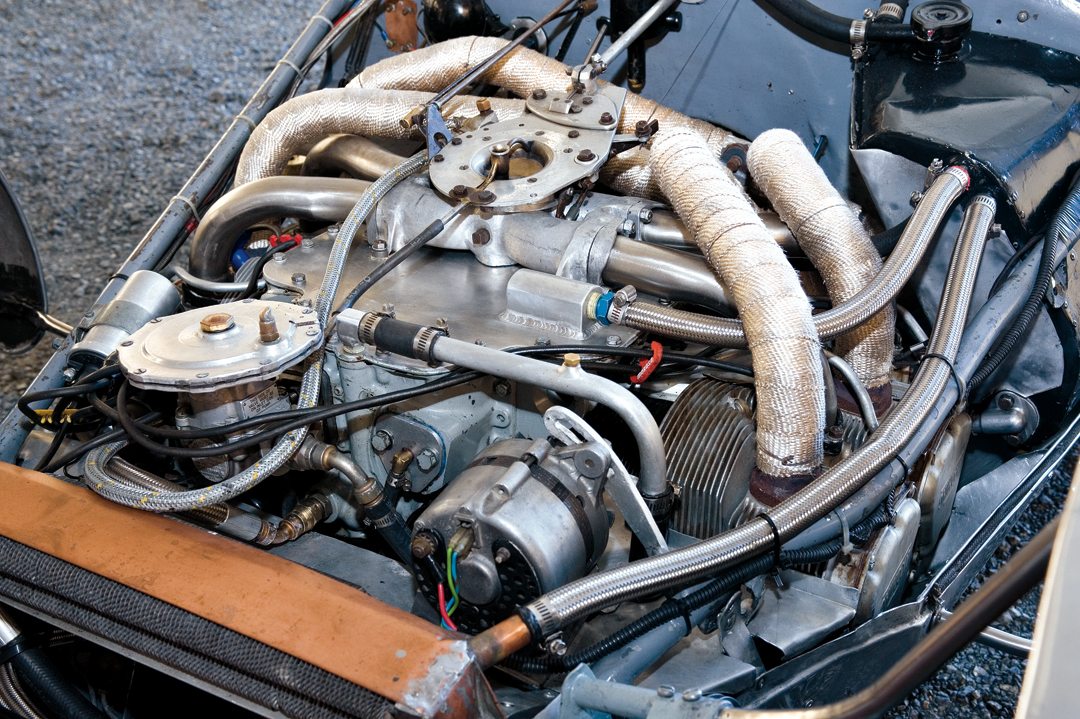
Photo: Tony Brownjohn
Light Engine
The two Lycoming engines soon came Watson’s way, giving him plenty of time to consider how best to use them. In standard form, the Lycoming 0-290 engine had a capacity of 4,733-cc or 290-cu.in. from a bore of 4-7/8-in and a 3-7/8-in stroke. Despite its capacity it was very light, weighing in at just 260 pounds.
There is no doubt that the Lycoming engine exercised Ralph Watson’s fertile mind, as in aviation form the inlet and outlet ports face downwards, making it clearly unsuitable for automotive use. In Watson’s mind the answer was to turn the engine upside down, but that presented another problem as the engine uses a wet sump. His solution was a triple-geared, double scavenge pump with twin intakes at the rear of the crankcase and a single intake set into the timing case. The original sump was removed and replaced by a flat plate over the opening.
Timing of the engine presented a further challenge as it had originally been fitted with twin aircraft magnetos for the twin-plug cylinder heads. Watson cobbled up a suitable unit using a Lucas base providing centrifugal and vacuum advance and a Ford V8 distributor cap that gave spark from dual rotor components. Twin coils were first used, but found not to be suitable. Initially the timing was set at 30 degrees, which was quite suitable for a standard engine. Later when the compression was raised, some experimentation did occur to improve the advance curve.
Watson also undertook experiments as to piston material, valve sizes, and so on. Through such experiments Watson was eventually able to build an engine with an output of 210 bhp at 3,600rpm.
The Car
With the hurdles presented by the engine appropriately behind him, Watson turned his mind to the type of car the Lycoming was best suited for. For a number of reasons—including the width of the engine at 33 inches, the need to carry a friend/pit manager and somewhere to carry tools and spares—his thoughts turned to a two-seater. On top of all that he did not personally favor an all-enveloping body and preferred a car with exposed wheels.
Watson also considered the attributes of having his car as either front- or rear-engined. However, taking into account the cooling needs of the air-cooled engine he decided on a front-engined car coupled with a rear-mounted gearbox. Such an arrangement would also get around the difficulties provided by an engine that was never designed to be fitted with a gearbox. The Lycoming engine therefore would not only be fitted upside down, but back to front as well!
As Ralph Watson was not a man of means, it also meant that any car he built also had to double up and be driven on the road. Watson wanted to compete in the car all over New Zealand and for this to be as economical as possible meant that it had to be driven to wherever the event was being held.
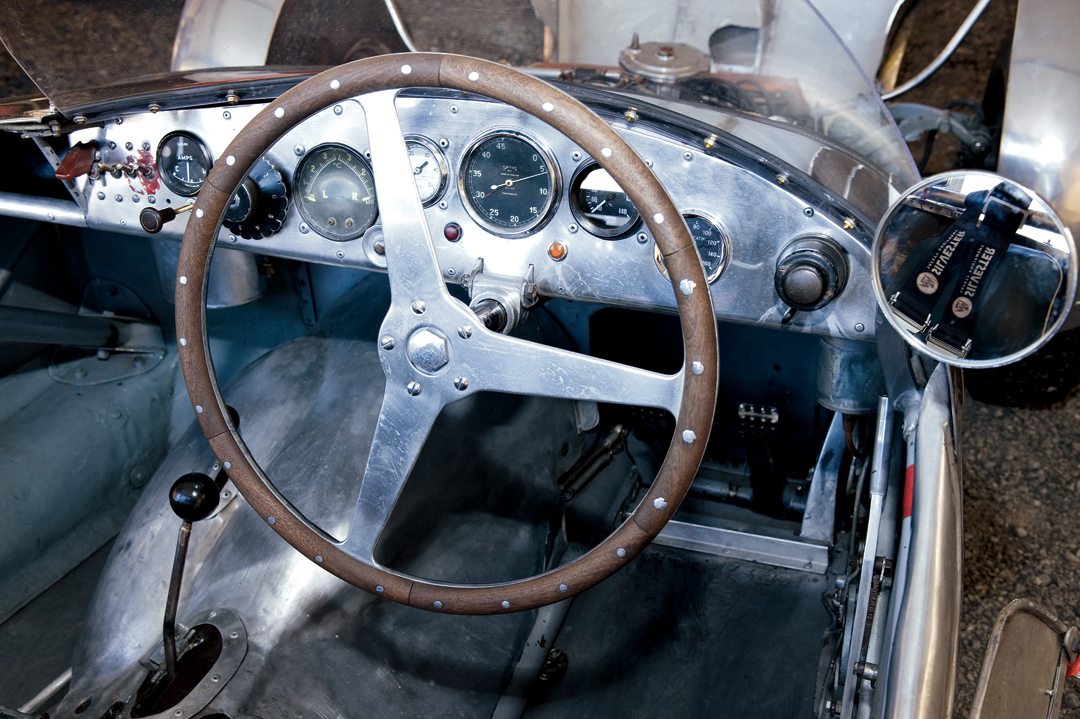
Photo: Tony Brownjohn
The Gearbox
As Watson had already made up his mind that the gearbox was to be in unit with the differential, he was presented with another challenge. He found out that there were no standard crown wheels and pinions available that would give him a high enough ratio to provide the top speed used on most New Zealand circuits of the time—between 120 and 140 mph.
This resulted in repeated visits to spare parts warehouses where he would ask to be able to count the number of teeth on gears and crown wheels. Watson said years later that he thought he must have tried the patience of many a storeman.
Eventually Watson settled on the Ford V8 crown wheel and pinion, as not only were several ratios available, they were also relatively easy to change. After some searching and necessary calculations as to what was available from Chrysler, Studebaker and Jaguar, Watson settled on the three-speed gearbox that was fitted to the 1941 Studebaker Commander. It offered 2.1 on the 3.54 standard crown wheel and he calculated that the maximum torque in second gear was just below the limit of traction and therefore easy to drive on acceleration.
It took Watson close to a month to undertake the necessary machining for the rear location of the gearbox, during which he also found that the Ford differential casing fit the rear end cover of the gearbox perfectly after minimal machining. The differential casing was also modified to accept the inboard rear brakes he had in mind.
For a clutch Watson chose a modern 10-inch Borg and Beck unit that was fitted to a flywheel he had turned from a steel plate. This was attached to what was now the rear of the engine, or where it would have driven the propeller if the engine was being used for aviation purposes.
Suspension
After much experimentation as to the suspension design, Watson decided that a de Dion arrangement would be most suitable at the rear, along with an amalgam of proprietary parts at the front.
A modified front crossmember from a Vauxhall Velox was used at the front along with Ford Zephyr springs, with the remaining components coming from an Austin A40. For the rear, Watson fabricated his own de Dion tube from 2-½ inch x 0.095 inch tubing that he squeezed to an oval section before bending to shape. The wheel bearing housing was fabricated from heavy wall tube before welding to the de Dion tube. The necessary springing came from Morris Minor torsion bars.
Brakes were drums all round with cooling to the inboard drums by open chassis tubes that exited just above the drum. The cooling worked well, though after one time when the open tubes also collected a sparrow(!), he subsequently fitted bath plugs to the tubes while touring.
Watson had decided on the body style he wanted for his car, but having it made presented a problem. He had observed that many lightweight alloy bodies suffered fatigue cracks, so he decided the body for his car would be made from a heavier gauge material. While he made some of the panels himself, the bonnet defeated him.
Watson turned to his contacts within the motor racing fraternity and went straight to a bodybuilder who had made a body for the Roycroft Ferrari. Undeterred by the gauge of the material the craftsman finished the bodywork to Watson’s specifications.
An almost flat full-length undertray was also built, and throughout his ownership the complete body proved very successful without any cracks forming.
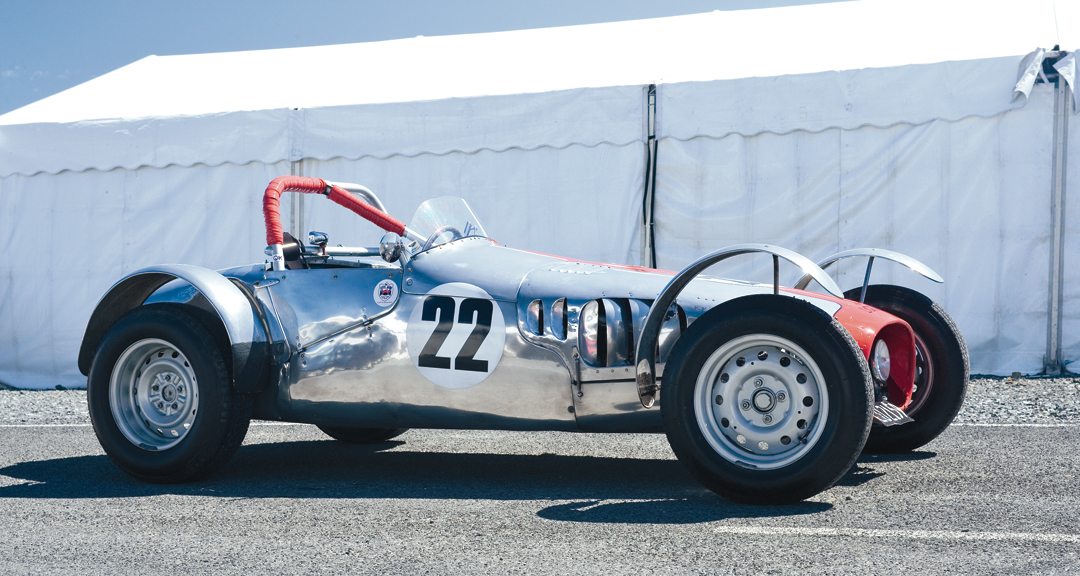
Photo: Tony Brownjohn
Injection
Another challenge was presented by the fuel and exhaust systems. Amal and Solex carburetors and even a Rolls-Royce supercharger were considered. However, in the end fuel injection was thought the way to go as it offered none of the mixture changes due to fuel surging that Watson had discovered with his BSA.
As nothing could be purchased straight off the shelf, Watson continued along his experimental way. A rotary vane aircraft type was tested, along with several nozzle types that were used with the Hilborn system. The biggest problem Watson found was providing a sufficient fuel/air mix from idle to maximum acceleration. Eventually, after experimenting with bypass jets that controlled the fuel pressure at high revolutions, the engine returned appropriate power throughout its whole rev range. At that stage Watson calculated the fuel pressure was 19 pounds at idle and 45 pounds at 3,600rpm or maximum revolutions.
Watson’s car was near completion and it was hoped that it would be ready for the 1955–’56 racing season. However, it wasn’t until August 1956 that it was driveable and a couple of months after that when Watson was happy with how it drove.
NZ Grand Prix
The car was entered for the 1957 New Zealand Grand Prix, scheduled to be held at a circuit set out on the Ardmore airfield, not far from Auckland. However, the inaugural event for the Lycoming Special was at a sprint meeting at Hamilton, a bit further south. There Watson achieved the fastest standing quarter mile at 14.4 secs and 125 mph.
For the 240-mile GP, Watson started 18th on a grid of 24 cars. From reports he drove steadily throughout the whole race, using just 3,300 rpm for most of the event. He finished in 7th position, while first across the line was Reg Parnell in a Ferrari 555/860 followed by Peter Whitehead in a similar car. To place Watson’s achievement in perspective, in 10th position was a bloke named Jack Brabham driving a Cooper T41.
Watson was very pleased indeed with the result, and also that he ran the whole race of three hours without stopping. What also pleased him was that the Lycoming Special returned 13 miles to the Imperial gallon. Apart from a crack in the exhaust pipe there was no damage to the car at all.
In among the racing Watson drove the Lycoming Special incessantly on the road where he found it to be a delightful road car and said later that his drives around the country were more enjoyable than the racing.
Races followed at such diverse circuits as Wigram, Ryal Bush, Mairehau and Taumarunui.
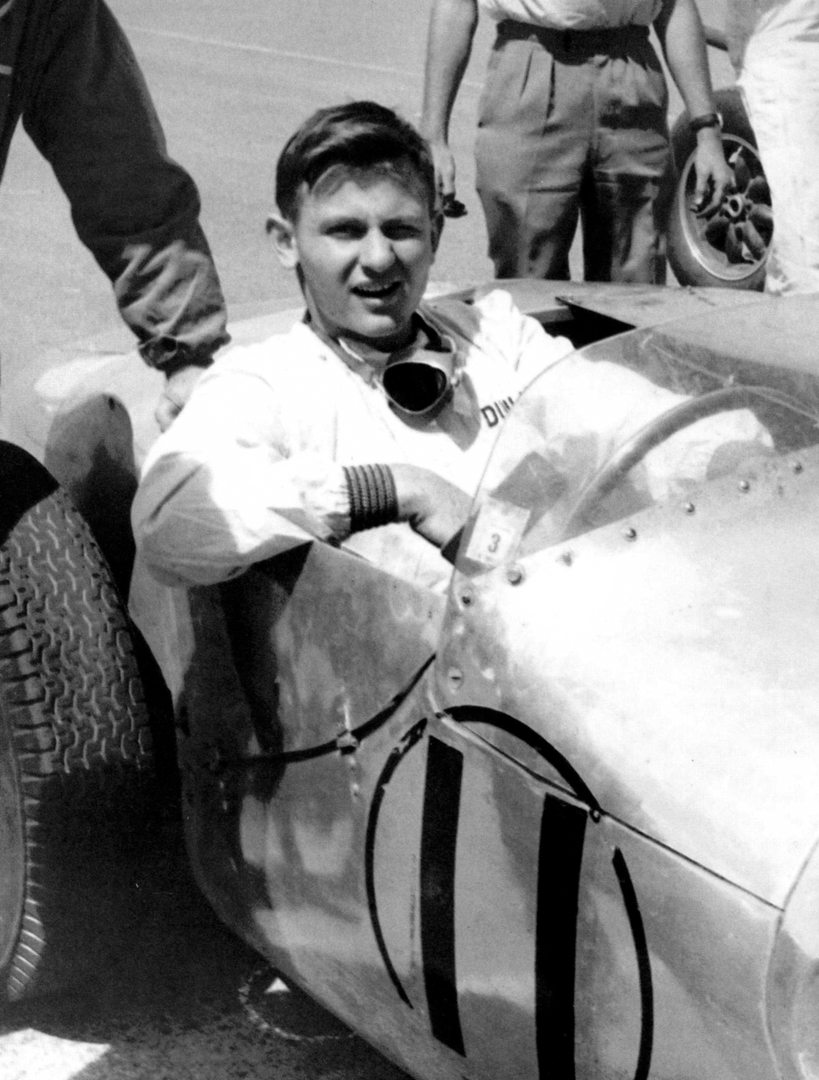
New Pistons
For the 1958 season, Watson made a number of improvements to the car that included new pistons from castings specially made by Hepolite in England. Shell also agreed to supply him with fuel, which meant he could take advantage of alcohol mixtures. All of this resulted in an increased engine speed and a safe 3,800 rpm with the occasional burst to 4,000.
The 1958 NZ GP was again at Ardmore, and Watson finished in 10th position with Jack Brabham 1st this time, in a Cooper T43 that had steering to one wheel only for his last few laps. Notable DNFs included Archie Scott-Brown in a Lister 57 and Bruce McLaren in a Cooper T43.
The Lycoming Special was again used during 1958 in events throughout New Zealand and the following year ran in the NZGP driven by Bob Gibbons.
Sold On
By mid-1959 the Lycoming Special had travelled 2,000 competition miles and 8,000 miles on the road. It was then that Watson decided it was time to sell it on. It was sold, complete with instruction book, to an engineering student named Malcolm Gill, but not before receiving a complete engine rebuild as part of the deal.
In Gill’s hands the car was fitted with detachable mudguards and entered in sports car races. It was a wise move as Gill went on to win the New Zealand Sports Car Championship two years running.
Perhaps the most memorable event was at a National meeting held at Wigram later in 1960. Bruce McLaren had blown up his Cooper during practice and was offered the Lycoming Special to drive. McLaren accepted the offer and after a couple of practice laps fitted his own tires to the car. During the race McLaren ran as high as 4th, but was using the brakes much harder than any time beforehand. He finished in 4th place after sliding through corners to slow the car down. At the end of the season a set of disc brakes arrived from England with McLaren’s compliments.
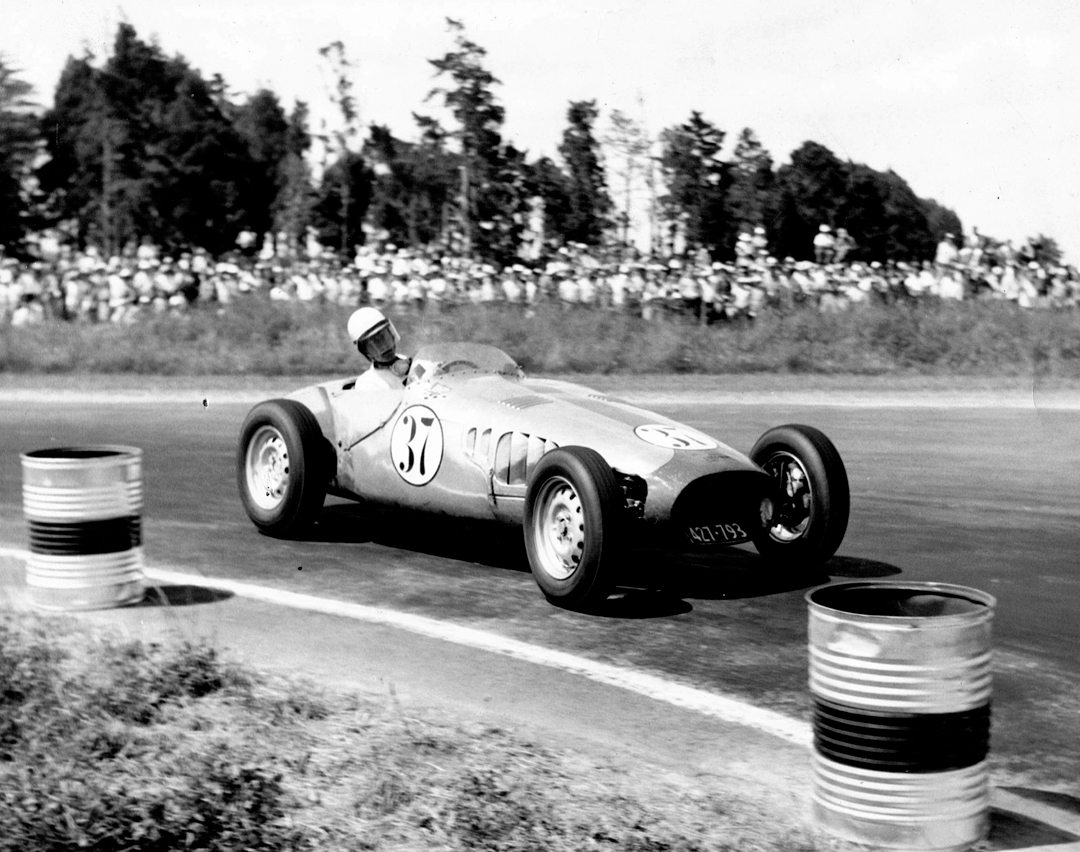
Greater Success
During 1964 the Lycoming Special was sold again to Jim Boyd, in whose hands the car went on to even greater success.
In Watson’s words, Boyd proved to be a “very good driver, with a strong will to win.” However, he was beset with engine problems, so much so that he enlisted Watson’s assistance. With that assistance Boyd campaigned the car for the next two seasons, winning the Sports Car Championships until defeated by a Ferrari 250LM and the famed Stanton Corvette.
Again it was sold, this time to the South Island, and while not disappearing did drift away from the limelight until 1983 when it was bought and restored by its current owner, Ralph Smith.
By the late 1950s, however, Ralph Watson had started to drift away toward the tool making industry for business and sailing for recreation. By the mid ’70s, with interest in historic cars on the rise, Watson considered repurchasing the Lycoming Special, but the asking price was too high. He did, however, find and buy back his BSA Special of many years before.
However, the connection between the Lycoming Special and Watson didn’t end there. In 1991, he traveled with Ralph Smith to the U.S. where the car ran at the Laguna Seca circuit.
Watson went on to enjoy his BSA Special and continued his experiments on rotary valve applications to various engines including BSA twins. Sadly, after an 18-month battle with Parkinson’s Disease, Ralph Watson died on August 23, 2006, aged 88.
Hampton Downs
Located just north of Auckland, the Hampton Downs circuit could be called brand spanking new. The circuit itself was completed at the end of 2009, and in January the following year hosted the inaugural New Zealand Festival of Motor Racing. Held over two consecutive weekends at first Hampton Downs and then the nearby Pukekohe circuit, the Festival celebrated the life and racing career of Bruce McLaren. In 2011 it was Chris Amon’s life and racing career being celebrated.
Wanting to join in with the Kiwi celebrations, I travelled to New Zealand for the fun. The difference this year was that, while the event was still held over two weekends, both events were at Hampton Downs as the historic Pukekohe circuit was no longer suitable for such a large event.
I don’t mention the weather all that much, but over the first weekend of the meeting it could best be called cyclonic. So much so that racing was abandoned on the first Sunday. That did not, however, stop us from catching up with Ralph Smith, the current owner of the Lycoming Special.
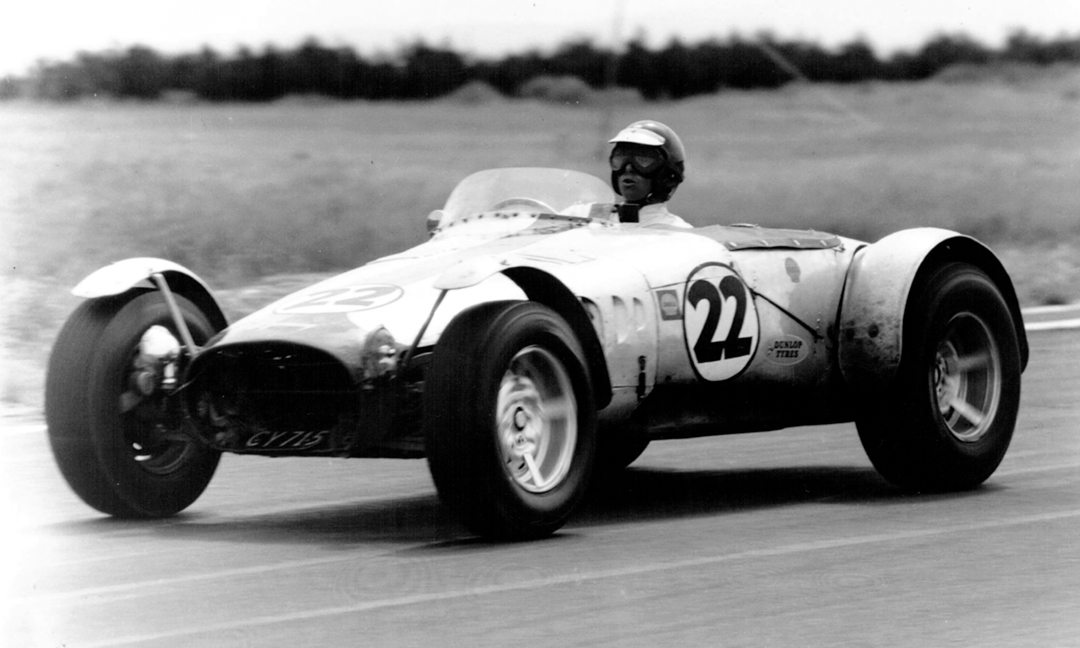
Ralph’s Car
“Yes I have brought it along in road-going mode. Guards on, lights fitted and tires inflated normally for the road,” Ralph answered in response to my question about lights and cycle guards.
Ralph has owned the car close on to 28 years, and I was of course interested in why he bought it and how it’s fared in his hands.
“Way back in about 1983 a friend had agreed to buy this car, but unfortunately before the deal went through he was killed in a train accident. His widow said that she was being approached by the previous owner to settle on the deal. Of course she wanted to back out as she didn’t want anything to do with it. Being a good friend of the family I knew what was going on. I asked her about it and she said that if I was happy to take on the deal I could go to it.
“So, I stepped in and went to where the car was, north of Canterbury, and came home with about three trailer loads of bits and pieces. The car was in a very much dismantled state. The gearbox was completely apart, as was the back end. The bits and pieces were actually strewn along a dividing hedge with livestock clambering all over it!
“The car was in very bad condition and prior to me buying it; an arrangement had been made with another bloke to borrow the parts with a view of constructing a replica. He would never own the original, but had the agreement from the historic racing governing body here to build this replica. After about 18 months he didn’t progress particularly well, and about the only thing he had done was to build the replica of the handbrake controls. Anyway, the owner at the time decided that he wanted to sell the car and that’s when my late friend came on the scene and subsequently I became the owner. So, the whole lot came back to Dunedin on the South Island where I live. That’s about three days traveling from here at Hampton Downs.
“The car was completely dismantled and needed complete rebuilding. The body had to be reshaped, and while I was fortunate enough to retain the front and rear sections, new guards had to be made along with new doors and scuttle. Thankfully the chassis was still in one piece, but it did need a complete strip back and repainting.
“It’s easy to say that it was then a matter of working on the rest of the components and to make sure they all fitted.
Engine Dismantled
“The engine had to be dismantled, because it came with a complete standard Lycoming engine that hadn’t been modified to be running upside down and back to front and fitted with a flywheel. That all had to be done. Such things as the oil galleries had to be modified internally for self draining and a new cover plate had to be made to go on top of the engine, which is actually the underside. I managed to use quite a bit of the original intake manifolds, but some modifications were necessary for the exhaust manifolds.
“The starter motor was a bit of a problem as it comes in from the opposite direction and had to be set up for reverse rotation to turn the engine in the right direction. Lots of things had to be set up for the engine’s unique situation, like the oil scavenge pump. What was used was a pump originally designed as a vacuum pump that I had to reverse the vanes. The capacity of the engine worked out to be 5,240-cc or 320ci.
“The gearbox is 3-speed that originally came from a 1942 Studebaker Commander, but the bottom shaft, which is the cluster, is now the input shaft coming from the driveshaft, and then goes through the top shaft that forms a transaxle into a Ford V8 differential. It just so happens that both of those components as standard can be perfectly mated to one another. The Studebaker gearbox did originally come from Borg Warner, but is highly modified with additional bearing carriers at the front so that there is a driveshaft from the engine with just one universal joint. When assembling, it’s a matter of very carefully lining everything up to make sure there are no odd angles. The flywheel is on the engine, as is the clutch, then a driveshaft. The gearbox is actually bolted to the differential. Then there is a hand-built one-off de Dion rear end.
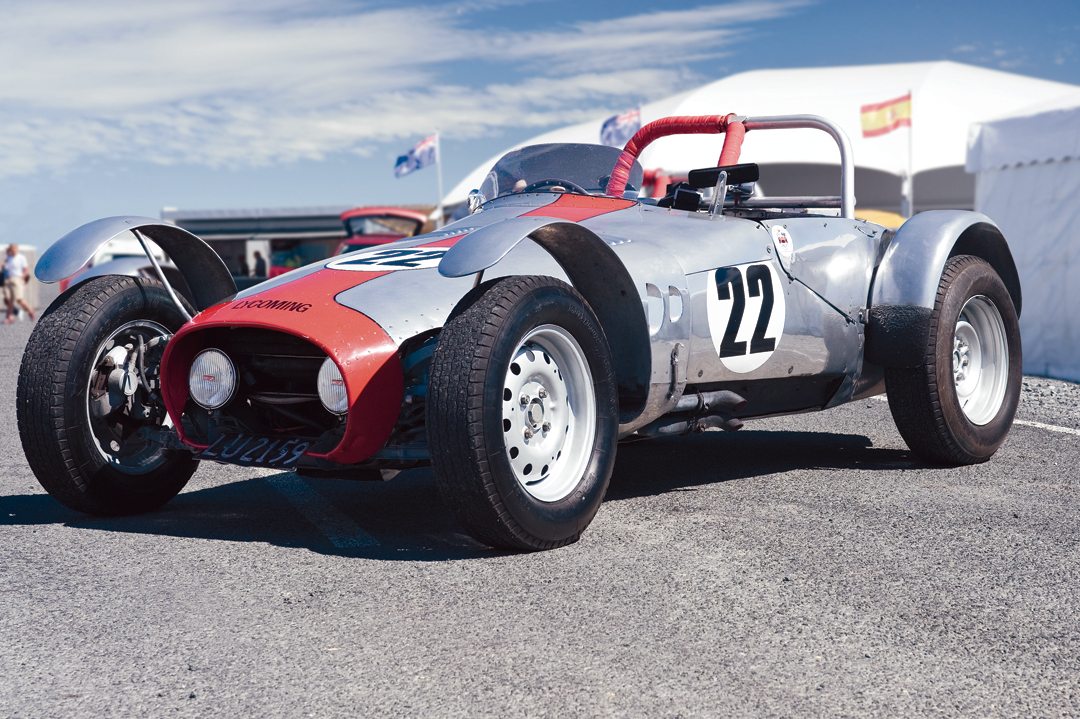
Photo: Tony Brownjohn
Brakes
“Originally it was fitted with drum brakes, and then Bruce McLaren drove it at the 1960 NZ Grand Prix meeting at Wigram circuit, Christchurch. The car was driven to the circuit by the then owner who intended to compete in the sports car event. Bruce had a bit of bad luck with his Cooper during official practice and he asked the owner of the Lycoming to run in the single-seater race. So they took the seat out and removed the guards and fitted his own Dunlop racing tires. Bruce finished in 4th place, and it was noted during the race that he was slowing down and throwing the car sideways into corners as he was running out of brakes.
“After the race Bruce spoke to the owner about the brakes, saying that he thought he could have done better than 4th and perhaps even picked up another two places. So he went back to the UK and decided to send out a set of Cooper Climax calipers and discs for the car as a thank you for a loan of the car. The brakes at the rear are inboard, mounted against the differential housing.
“Jim Clark also drove the car at a Teretonga in 1965. It was more of a demonstration run after the main event. He saw it running in the sports car event and cleaning everything up and just couldn’t believe it. So he asked for a drive, and was told to take it away. He did about a half dozen laps in the car and came back very much impressed.
“It probably took me about 18 months to get the car going. That was in late 1984. The first time I took it out was a round-the-streets race in Dunedin.”
Squeezed In
There is something wonderful about a race meeting spread out over two weekends—in particular the fact that it allows ample time for track testing. Thank heavens the stars and weather did align and we were given the nod for testing the Lycoming on the Thursday afternoon between events.
I had closely looked at the Lycoming Special the previous weekend and just marvelled at the sight of the engine. The vision of a giant spider came immediately to mind with the exhaust and induction pipes running every which way. Being well used to the type of engine we are familiar with, the sight of a large exposed flat four is rather unusual.
Soon enough I suited up and was sitting inside. Plenty of room, just like many a sports car that I have driven. The gearstick, pedals, steering and so on all come easy to hand. The shift is easy too, with first down to the left and second up to the right and top straight down. Never got a chance to find reverse, but it’s in there somewhere.
Finally out on to the more than interesting Hampton Downs circuit. First gear is really just for getting away, and once into second I put my foot down. It’s not instantaneous like a high revving built-for-racing engine, but it certainly pushes me back into the seat. Ralph has asked me to watch the temperature, especially when taking it easy behind the camera car. Being air-cooled, there is no coolant, of course, but the gauge shows the all important temperature of the cylinder heads.
I have driven a couple of aero-engined cars before and while the Lycoming engine dates from the immediate post WW2 period it’s no different from those from the pre-war period. None are designed for rapid rises and falls in engine revolutions as needed in circuit racing. Most are relatively slow revving, and with the Lycoming flat four it is very much an example of firing every second telegraph pole.
But, there are just bags of torque, and with the 3-speed no need to change every time the revs drop a little. Later I was watching Ralph having no problem in keeping wheel to wheel with the Maserati 250F of Peter Giddings. Both gems of racing cars, but with such different breeding.
The brakes? Well I know they are there and require a hefty right leg to achieve the required deceleration. However, after about three laps my confidence in them improved dramatically. In top with all that torque, the car is a delight and it’s no wonder Ralph Watson enjoyed it so much on the road. In fact I would say it’s one of those racing cars that is as equally at home hurtling down the straight or running down to the shops for some milk.
All in all just a delightful racing car that is one of the most iconic historic racing cars competing in New Zealand.
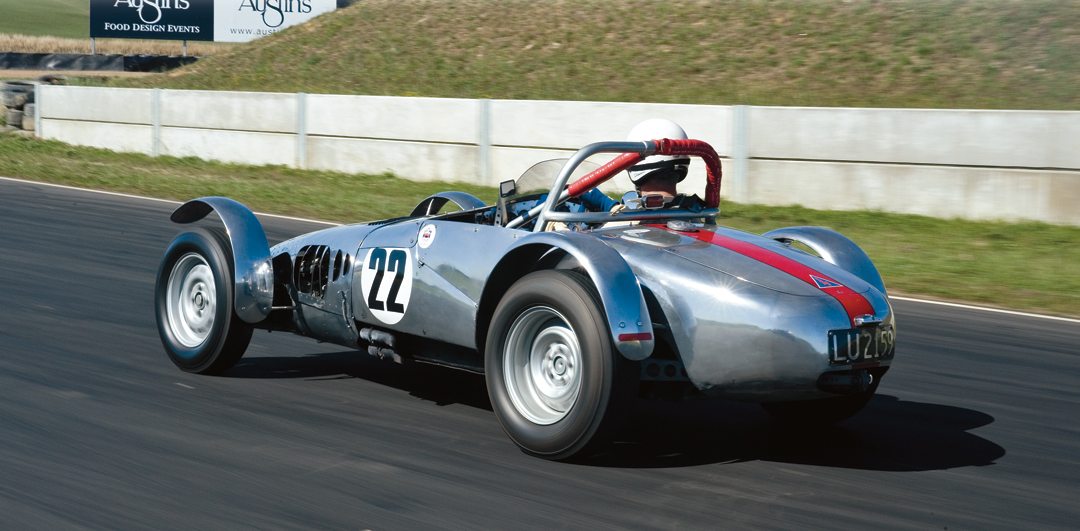
SPECIFICATIONS
Chassis/Body: Alloy panels over a tubular space frame
Wheelbase: 91 inches
Weight: 1,262 lbs
Suspension Front: Modified Austin A40, Rear: de Dion with reduced diameter Morris Minor torsion bars
Steering Gear: Morris Minor
Engine: Lycoming 4-cylinder 290-3 upgraded to 320 cubic inches in 1960
Induction: Manifold fuel injection
Power: Enough
Clutch: Single-plate Borg & Beck as fitted to Austin Sheerline
Transmission: Borg Warner TD86 as fitted to a 1942 Studebaker Commander but modified to give step-up gearing and adapted to a 1945 Ford V8 differential, forming a transaxle
Brakes: Hydraulic dual system front and rear converted to disc brakes (1960)
Wheels: 15-inch pressed steel
Tires:Dunlop Racing L series 650/15 rear 550/15 front
Resources
Many thanks to the late Ralph Watson and to Ralph Smith for allowing Vintage Racecar to get up close to his car and also thanks to Ralph Watson for his legacy.
Ralph Watson: Special Engineer
Written and published By T. R. Sheffield
ISBN 0-476-01371-2 2005


